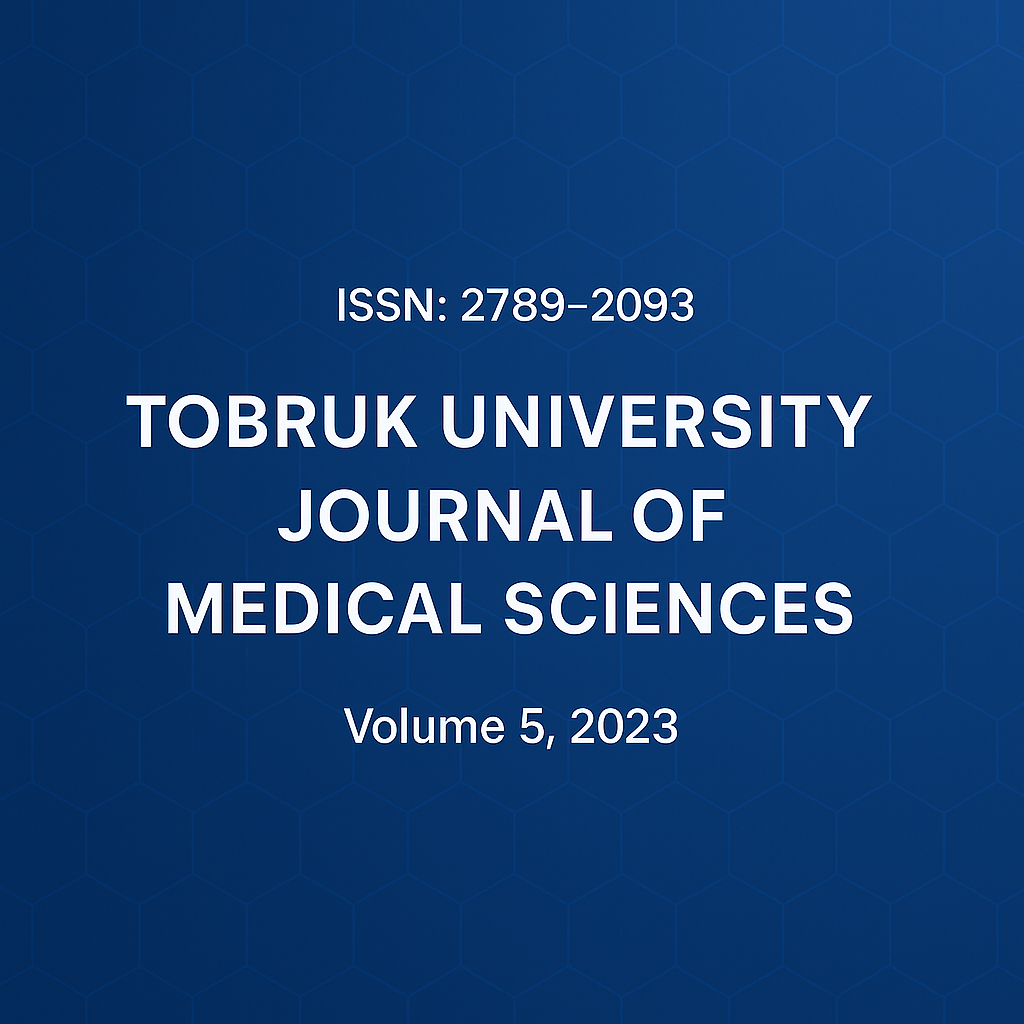Identification of Preoperative Profile For Patients With Brain Tumors and the Role of Nursing Care in the Neurosurgery Unit at Alexandria University Hospital
DOI:
https://doi.org/10.64516/qkd8es15Keywords:
Neurosurgery, Brain tumors, Surgical Oncology, Nursing careAbstract
Brain tumors usually alter the tissues in which they are located. Thus, the immediate behavioral consequences of a brain tumor directly reflect the functions of the neural systems in the vicinity of the tumour. Nursing care is a very important part of the treatment plan of brain tumors. The goals of nursing care depend on the patient's needs and how the tumor has affected his or her daily activities. A descriptive analysis of 30 preoperative adult patients has been carried out at the Neurosurgery unit at Alexandria University Hospital between March to September 2019 was conducted at the morning and afternoon shift. Thirty adult preoperative patients of both sexes were consented and recruited to the study. A preoperative assessment sheet was developed. Analysis of the prevalence of preoperative symptoms was conducted. The preoperative symptoms include: headache (93.8%), dizziness (71.4%), seizures (50%), anxiety (45.8%), loss of attention and concentration (66.7%). Assessment of cranial nerves and motor functions revealed: defective or absent central vision (36.7%), dilated pupil (30%), the trochear and abducent nerves were not affected in all patients (100%), muscle atrophy (12.5%), positive Romberg test (41.7%), finger-to-finger test was impaired (34.8%) of patients, heel to shin test was impaired in one-third (33.3%) of the assessed population. Identification of patients’ problems and analysis of these problems are very important to the nurse to fulfill the required nursing care to provide success for brain tumor operations and either relieve or adapt the patients manifestations to accommodate with their medical condition.
References
1. Azzarelli R, Benjamin D, Philpott A. The developmental origin of brain tumors: a cellular and molecular framework. Development. 2018;145(10):12-42.
2. Oncology Nursing Society. Core Curriculum for Oncology Nursing. 6th ed. Saunders: Elsevier; 2019. p. 216-230.
3. Bouchard R, Owens N. Nursing Care of the Cancer Patients. 6th ed. Saint Louis: Mosby; 2018. p. 67-73.
4. Lin E. Advanced Practice Oncology Nursing. Philadelphia: W.B. Saunders; 2018. p. 93-117.
5. Iggulden H. Care of the Neurological Patient. London: Blackwell; 2016. p. 28-51.
6. Lindsay W, Bone I, Callander R. Neurology and Neurosurgery Illustrated. 13th ed. Philadelphia: Churchill Livingstone; 2014. p. 299-351.
7. Dillon P. Nursing Health Assessment. 12th ed. Philadelphia: Davis; 2017. p. 345-91.
8. Zorn M. Brain Tumor. MedicineNet.com; 2017. Available from: http://www.medicinnet.com/brain_tumor/page5.htm
9. Dubay LM. 100 Questions and Answers About Brain Tumour. 2016. Available from: www.books.google.com
10. Guyton A, Hall J. Textbook of Medical Physiology. 11th ed. Philadelphia: Elsevier; 2016. p. 654-87.
11. Jarvis C. Physical Examination & Health Assessment. 14th ed. USA: Elsevier Science; 2014. p. 876-932.
12. Lin E. Advanced Practice Oncology Nursing. Philadelphia: W.B. Saunders; 2016. p. 93-117.
13. Iggulden H. Care of the Neurological Patient. London: Blackwell; 2016. p. 28-51.
14. American Association of Neuroscience Nurses (AANN). Neuroscience Nursing Practice: Human Responses to Neurologic Dysfunction. 8th ed. Philadelphia: W.B. Saunders; 2016. p. 243-76.
15. Springhouse L. Neurologic Care. Lippincott: Williams; 2017. p. 21-43.
16. Ladner K, Delaune S. Fundamentals of Nursing: Standards & Practice. 6th ed. Canada: Thomson Delmar Learning; 2016. p. 84-97.
17. Taylor C, Lillis C. Fundamentals of Nursing: The Art and Science of Nursing Care. 8th ed. Philadelphia: Lippincott Williams & Wilkins; 2018. p. 243-68.
18. Barker E. Neuroscience Nursing: A Spectrum of Care. 6th ed. London: Mosby; 2017. p. 127-73.
19. Dudek S. Nutrition Handbook for Nursing Practice. 5th ed. Philadelphia: Lippincott Williams & Wilkins; 2018. p. 8-37.
20. Lindsay W, Bone I, Callander R. Neurology and Neurosurgery Illustrated. 6th ed. Philadelphia: Churchill Livingstone; 2016. p. 299-351.
21. Sunaetr S. Pre-surgical Planning for Tumor Resectioning. J Magn Reson Imaging. 2018;23:887–905.
22. Balon R, Segraves R. Handbook of Sexual Dysfunction. USA: Taylor & Francis Group; 2015. p. 234-54.
23. Smeltzer S, Bare B, Hinkle J, Cheever K. Brunner & Suddarth’s Textbook of Medical-Surgical Nursing. 11th ed. Philadelphia: Lippincott Williams & Wilkins; 2018. p. 787-1112.
24. Ladner K, Delaune S. Fundamentals of Nursing: Standards & Practice. 3rd ed. Canada: Thomson Delmar Learning; 2016. p. 84-97.
25. Davidson R. Anxiety, Depression and Emotion. Oxford: Oxford University Press; 2019. p. 457-86.
26. Castle D, Kulkarni J, Abel K. Mood and Anxiety Disorders in Women. Cambridge: Cambridge University Press; 2016. p. 254-86.
27. Mitchell M. Psychological Care of Patients Undergoing Elective Surgery. Nurs Stand. 2017;21(30):48-55.
28. Westcarth L, Armstrong T. Diagnostic Reasoning: Seizures in People with Cancer. Clin J Oncol Nurs. 2017;11(8):265-87.
29. Chapman A. Abraham Maslow Original Hierarchy of Needs Concept. 2019. Available from: http://www.businessballs.com/maslow.htm
30. Briggs C. Keeping the Fun in Fundamentals: Combining Creativity with Social Nursing. Kentucky Nurse. 2018;56(1):7.
31. Foltz A. Cancer Nursing: Principles and Practices. 14th ed. Philadelphia: Saunders; 2018. p. 342-65.
32. Otto S. Oncology Nursing. 12th ed. St Louis: Mosby; 2018. p. 493-516.
33. Groenwald S, Frogge M, Goodman M, Yarbro C. Cancer Nursing: Principles and Practice. 3rd ed. Boston: Jones & Bartlett; 2017. p. 197-207.
34. O’Brien M. Spirituality in Nursing: Standing in Holy Ground. 13th ed. Boston: Jones & Bartlett; 2015. p. 234-52.
35. World Health Organization. WHOQOL: Measuring Quality of Life. Geneva: World Health Organization; 2013.
36. Rubenstein J. Understanding Brain Metastases: A Guide for Patient and Caregiver. Washington: Lung Cancer Alliance; 2017. p. 21-54.
37. Caryl D, Tracy K. Distress Assessment: Practice Change Through Guideline Implementation. Clin J Oncol Nurs. 2017;11(6):817-21.
Downloads
Published
Issue
Section
License
Copyright (c) 2021 Nagah A. Hussein, Aisha M. Bojazyah, Mohammed O. Bohlala (Author)

This work is licensed under a Creative Commons Attribution 4.0 International License.











